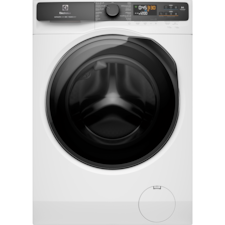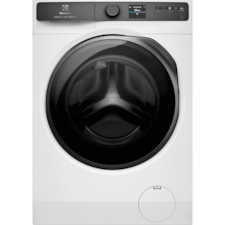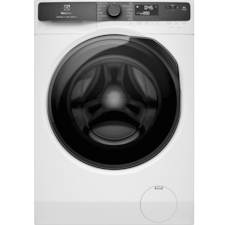Keeping your duvet clean is important for maintaining a healthy and comfortable sleep environment. Over time, duvets can collect dust, allergens, and moisture, which may affect their freshness and durability. A common question is: can a duvet be washed in a washing machine without damaging it?
The answer is yes, most duvets can be safely washed at home, but it's essential to use the right methods to protect the fabric and filling. Depending on the material—whether down, feather, or synthetic—specific care is needed to avoid issues like clumping or fabric wear.
In this guide, we’ll explain how to clean a duvet effectively in your washing machine, providing practical tips to help ensure it stays fresh, clean, and long-lasting.
Can a duvet be washing in a washing machine?

Yes, you can wash a duvet in the washing machine, but it’s important to consider a few factors before doing so. The size, weight, and material of the duvet, as well as the capacity of your washing machine, all play a role in ensuring a successful wash without damaging your duvet or machine.
Here’s what to keep in mind:
1. Check the Duvet Size and Weight
Before washing your duvet, it’s essential to verify whether it fits comfortably in your washing machine. If your duvet is too large or heavy, it may not be cleaned properly and could potentially damage the machine.
To avoid issues, use the table below to check if your washing machine’s drum capacity is suitable for your duvet size:
|
Duvet Size |
Recommended Drum Capacity |
|
Single Duvet |
7 kg |
|
Double Duvet |
8 kg |
|
King/Queen Duvet |
9-10 kg |
|
Super King Duvet |
10 kg+ |
For those who frequently wash large items like King or Super King duvets at home, a 10kg washing machine or 13kg washing machine offers the generous capacity and spacious drum needed for a thorough and convenient wash.
2. Read the Care Label for Instructions
It’s crucial to check the care label on your duvet before washing. The label will provide the manufacturer’s specific instructions on how to safely clean the duvet, including recommended water temperature, drying methods, and whether the duvet is machine-washable or dry-clean only.
Some materials, such as synthetic fibres, are typically safe for machine washing, while down or feather-filled duvets may require gentler care or professional cleaning.
Understanding the symbols on the care label is important for ensuring you don’t accidentally damage your duvet.
3. Check Your Washing Machine
Before washing your duvet, ensure that your washing machine has enough room for the duvet to move freely during the wash cycle. A cramped drum can prevent the duvet from being thoroughly cleaned.
Some washing machines also feature a duvet cycle, which is specifically designed to handle the bulkiness of duvets while ensuring optimal cleaning and protection.
If your machine has a duvet or bedding cycle, it’s best to use this setting to achieve the best results. For a detailed guide on operating your machine, check out our guide on how to use a washing machine.
Washing duvet in washing machine: Step-by-step guide
Washing your duvet in a machine can be a convenient way to keep it clean and fresh. However, it’s essential to follow the right steps to ensure the duvet is not damaged during the wash. After checking the size, weight, and care label, you’re ready to begin the washing process.
Here’s a step-by-step guide on how to wash duvet in washing machine to help you get the best results.
Remove Duvet Covers and Pillow Shams
Before washing, make sure to remove any duvet covers, pillow shams, or other bedding accessories. These can be washed separately using their own care instructions. Removing the cover not only ensures better cleaning of the duvet but also helps prevent any additional wear on the outer fabric.
Pretreat Any Stains or Spots
Before placing the duvet in the washing machine, inspect it for any stains or spots. Use a stain remover or a mild detergent to pretreat areas with visible marks. Gently dab the stained areas with the solution and let it sit for a few minutes to help lift the dirt. Avoid scrubbing, as it can damage delicate fabrics or fillings.
Inspect for Any Rips or Loose Seams
Next, carefully inspect the duvet for any rips, tears, or loose seams. If there are any small damages, mend them before washing to prevent further tearing during the wash cycle. Washing a duvet with loose seams or tears can cause the filling to shift or escape, compromising the structure of the duvet.
Fold and Place the Duvet Inside the Drum
Once inspected, fold the duvet neatly and place it inside the drum. Ensure the duvet isn’t crammed into the machine, as this can prevent thorough cleaning and may damage the fabric or washing machine. If your washing machine has enough capacity, let the duvet sit loosely so it can move freely during the wash cycle, ensuring an even clean.
Choosing the Right Detergent and Washing Mode for Your Duvet

Selecting the correct detergent and washing cycle is crucial to ensure your duvet is cleaned thoroughly without causing any damage. The wrong detergent or wash program could lead to residue build-up, fabric damage, or clumping of the filling.
Here’s how to choose the best options:
- Detergent Selection: Use a mild, non-bleach detergent to avoid damaging fabric or filling, especially for down or feather duvets. Use less detergent to prevent residue buildup, which can cause clumping and reduce softness.
- Washing Program Selection: Opt for a gentle or delicate cycle to protect both fabric and filling. Specialised programs like DuvetCare 60 or DuvetCare 90 in Electrolux machines are ideal for washing duvets gently and thoroughly.
- Water Temperature: Choose warm water for synthetic duvets and cold water for down or feather duvets to protect the filling. Again, always check the care label for guidance.
How to Dry a Duvet Quickly
To dry a duvet quickly, it’s best to use a large-capacity dryer, if available, as smaller dryers may not allow enough space for the duvet to tumble freely. For optimal results, set the dryer to low to medium heat. This prevents damage to the fabric or filling while still drying it efficiently.
To avoid mildew, ensure the duvet is thoroughly dried before storing or using it. Damp spots can lead to mould growth and odours. Using dryer balls or tennis balls can help fluff the duvet during the drying process, distributing the filling evenly and restoring its loft.
Be sure to know what items to put into the dryer safely before starting your drying cycle.
Post-Washing Care
Once the duvet is dry, it’s important to check for any damp spots, particularly in the corners or seams. If necessary, air dry these areas by hanging the duvet in a well-ventilated space to ensure it’s completely dry.
After drying, give the duvet a good fluffing and reshaping to evenly distribute the filling and restore its original shape. This helps maintain the duvet's loft and comfort.
To keep your duvet fresh when not in use, store it in a breathable bag or cotton storage cover. Avoid plastic bags, as they can trap moisture and lead to mildew, ensuring your duvet stays clean and ready to use.
Why Choose Electrolux for Duvet Care?

Electrolux washing machines and dryers are designed with advanced technology to help you care for your duvet effectively while maintaining sustainability. The DuvetCare 60 and DuvetCare 90 programs offer tailored cycles that clean your duvet gently and thoroughly, ensuring it stays fresh and fluffy without damage. These programs optimise water flow, spin speed, and temperature to preserve the quality of your bedding, protecting both fabric and filling.
By choosing Electrolux, you’re not just getting superior cleaning performance—you’re also supporting a more sustainable lifestyle. Our machines are energy-efficient, helping to reduce water and energy consumption without compromising on quality.
If you’re looking for the perfect way to care for your duvets and bedding, we encourage you to explore our new range of Ultimate Care Laundry products and discover the benefits of our innovative features.
FAQs about How to wash duvet in washing machine: A Step-by-Step Guide
-
How often should I wash a duvet?
Wash your duvet every 6 months, or more frequently if it's heavily used.
-
What is the duvet mode on a washing machine?
Duvet mode is a specialised setting designed to gently clean bulky bedding without damaging the fabric or filling.
-
Can a 10kg washing machine wash a duvet?
Yes, a 10kg washing machine can handle most duvets, including king-size, depending on the weight and material.
-
Can you dry a duvet in the dryer?
Yes, if the care label allows. Use low heat and add dryer balls to keep it fluffy.
-
What temperature should you dry a duvet?
Use a low heat setting (below 120°F / 49°C). High heat can damage the filling.



